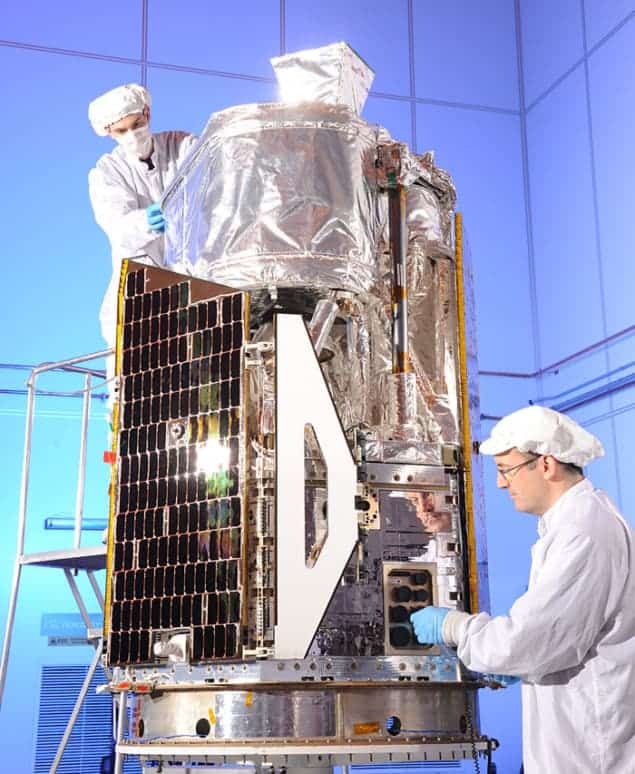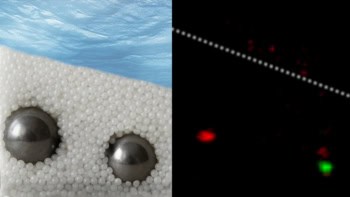
NASA’s Nuclear Spectroscopic Telescope Array (NuSTAR) was launched from Kwajalein Atoll in the Pacific Ocean today. NuSTAR is primed to hunt for black holes and other celestial bodies, scanning the sky in the high-energy X-ray (6–79 keV) region of the electromagnetic spectrum. The observatory was launched from a Pegasus XL rocket carried by a “Stargazer” aircraft that took off an hour before the actual launch time.
The NuSTAR mission will be the first to accurately image the universe in the high-energy X-ray spectrum. Previous orbiting telescopes do not have the focusing abilities of NuSTAR, leading to low sensitivity and high background noise. NuSTAR’s two-year primary mission will hopefully see it map specific regions of the sky. It has three main mission objectives. First, to count the number of collapsed stars and black holes in different regions, including those surrounding the centre of the Milky Way. Second, to study young supernova-remnant material to understand how stars and elements are created. Last, to understand what powers relativistic particle jets – streams of plasma that travel at near the speed of light and can be detected in the radio optical, X-ray and gamma-ray regions of the spectrum – from the most extreme active galaxies hosting supermassive black holes. According to NASA, NuSTAR is also capable of investigating the origins of cosmic rays, looking at supernovae and gamma-ray bursts, and studying the surface of the Sun.
Eye in the sky
The observatory consists of two co-aligned telescopes that have newly developed optics and detectors. These detectors make NuSTAR very sensitive to X-rays at higher energies compared with previous missions such as Chandra and XMM.
About 5 s before launch, the Pegasus XL rocket ignited and propelled NuSTAR into space. An aircraft-assisted launch was chosen as it is cheaper because less fuel is used. NuSTAR is now in a low Earth equatorial orbit at an altitude of approximately 600 km. Its five solar panels opened properly and the spacecraft reoriented toward the sun.
As X-rays have a very long focal distance, a large distance is needed between the mirrors and detectors of the instrument. In orbit, the instrument should extend to achieve a focal length of 10 m, allowing the observatory to focus X-ray light into sharp images. Over the next week, NuSTAR researchers will perform a series of checks to ensure that all systems are fully operational, and about a week later they hope to deploy the 10 m boom. Scientific operations are expected to begin in about 30 days.
Fiona Harrison of the California Institute of Technology in the US is NuSTAR’s principal investigator and conceived the mission almost 20 years ago. “We will see the hottest, densest and most energetic objects with a fundamentally new, high-energy X-ray observatory that can obtain much deeper and crisper images than before,” she says.
Many eyes
NuSTAR is meant to work with other telescopes already in space, including NASA’s Chandra X-ray Observatory, which observes lower-energy X-rays. The hope is that the combined information will provide the best and most complete picture of some of the most energetic and exotic objects in the universe.
Paul Hertz, NASA’s astrophysics division director, points out that the low-cost NuSTAR mission has taken just over four years from approval to launch, and uses technology developed in some of NASA’s basic-research programmes. “The result of these modest investments is a small space telescope that will provide world-class science in an important but relatively unexplored band of the electromagnetic spectrum,” he says.
A more in-depth discussion of the NuSTAR mission is available in this NASA video.



